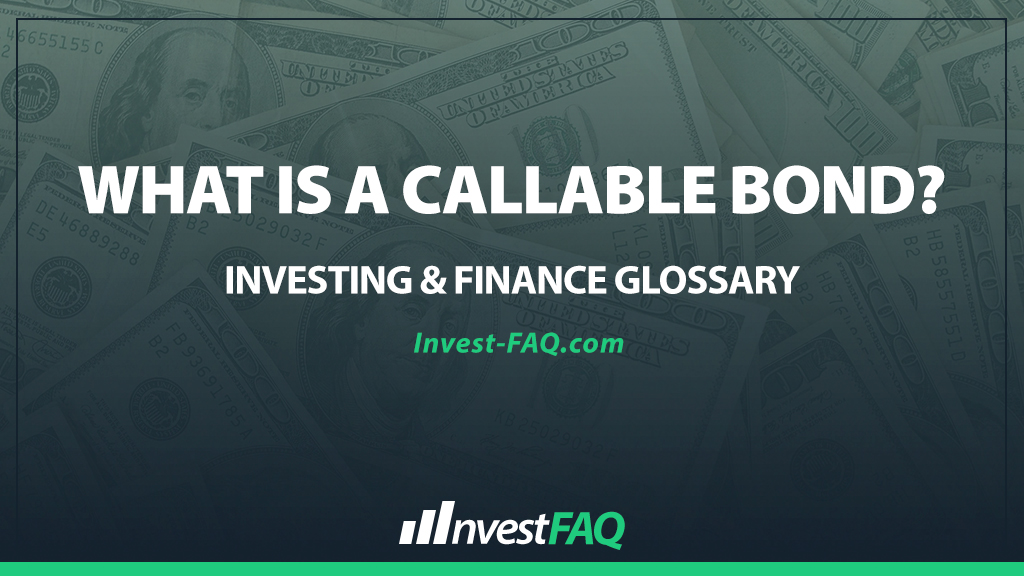
Callable Bond
Contents
A callable bond is a type of bond that gives the issuer the right, but not the obligation, to redeem the bond before its maturity date at a predetermined call price. This feature allows issuers to manage their debt more flexibly, particularly in a declining interest rate environment, by refinancing older, higher-interest debt with new bonds at lower rates.
Businesses issue callable bonds to take advantage of potential future decreases in interest rates. The callable feature is a strategic tool for financial management, enabling companies to reduce interest expenses and optimize their capital structure over time.
While this can be advantageous for issuers, investors face reinvestment risk, as the bonds might be called away in favorable interest conditions, forcing them to reinvest at lower prevailing rates.
Example of a Callable Bond
Consider “SolarTech Inc.,” which issues $1 million in callable bonds with a 10-year maturity and a 5% annual coupon rate. The bond indenture includes a call provision that allows SolarTech to redeem the bonds at a call price of 102% of face value after 5 years.
Issuance of Callable Bonds: SolarTech records the issuance of the bonds by increasing its cash and long-term liabilities accounts by $1 million, the face value of the bonds.
Annual Interest Payment: Each year, SolarTech pays $50,000 in interest to the bondholders (5% of $1 million), recorded as an interest expense.
Callable Bond Redemption: If, after 5 years, interest rates have fallen to 3%, SolarTech decides to exercise the call option. It redeems the bonds at the call price of $1,020,000 ($1 million x 102%).
By redeeming the callable bonds early, SolarTech Inc. can retire its existing debt issued at a 5% interest rate and potentially issue new debt at the lower market rate of 3%, thereby reducing its future interest payments.
The accounting for the early redemption includes removing the bond liability from the balance sheet and recognizing a loss of $20,000 (the premium paid over face value for the call) plus any unamortized bond issuance costs.
This move, while beneficial for the issuer in terms of reduced interest expenses, must be weighed against the costs of calling the bonds and issuing new debt.
Significance for Investing & Finance
The callable bond feature has significant implications in accounting and financial management:
Interest Expense Management: It provides issuers with a mechanism to manage and potentially lower their interest expenses in response to favorable market conditions.
Debt Strategy Flexibility: Callable bonds offer companies the flexibility to adapt their debt strategies as market conditions change, supporting more proactive capital management.
Investor Considerations: The inclusion of a call feature can affect a bond’s attractiveness to investors and its initial pricing, as investors demand higher yields to compensate for the additional risk of early redemption.
Financial Reporting: Accounting for callable bonds requires careful tracking of interest payments, call premium expenses, and any adjustments to the carrying amount of debt, ensuring accurate financial reporting and compliance with accounting standards.
In summary, callable bonds are a valuable financial tool for issuers seeking flexibility in managing their long-term debt obligations.
They allow companies to take advantage of changing interest rates to optimize their interest expenses, although they require careful consideration of the associated costs and implications for both issuers and investors.
From an accounting perspective, proper documentation and reporting of callable bond transactions are essential for accurate financial statements and effective debt management.
FAQ
How does a callable bond benefit the issuer during periods of falling interest rates?
A callable bond allows the issuer to redeem high-interest debt before maturity in periods of falling interest rates, enabling refinancing at lower rates which can significantly reduce future interest expenses.
What risk does a callable bond pose to investors?
Callable bonds pose reinvestment risk to investors, as the issuer may redeem the bond when interest rates decline, forcing investors to reinvest the principal at lower prevailing rates, potentially reducing their income.
Can an issuer call a bond at any time once it becomes callable?
Once a bond reaches its callable date, the issuer has the discretion to call the bond at any time if it is advantageous to their financial strategy, subject to the terms outlined in the bond’s indenture.
How is the call price of a bond typically determined?
The call price of a bond is usually predetermined and outlined in the bond’s indenture, often set at a premium above the bond’s face value to compensate investors for the early redemption.
